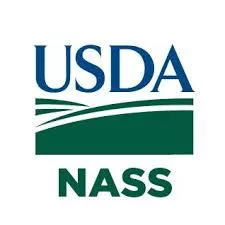
(ND Ag Connection) – By Scout Nelson
North Dakota farmers enjoyed mostly favorable fieldwork conditions during the week ending July 7th, with 4.7 days suitable for fieldwork according to the USDA’s National Agricultural Statistics Service (NASS).
Soil moisture remained adequate to surplus across the state, with topsoil ratings at 0% very short, 3% short, 77% adequate, and 20% surplus.
Subsoil moisture followed a similar trend, with 0% very short, 5% short, 79% adequate, and 16% surplus.
Field Crops:
Soybeans: Development lagged behind the previous year and average. While conditions remained satisfactory (56% good and 2% excellent), only 9% of soybeans were blooming, compared to 29% last year and 18% historically.
Spring Wheat: Spring wheat fared better, with conditions rated mostly good (67%) and excellent (14%). However, joined (87%) and headed (49%) stages were behind the five-year average.
Durum Wheat: Durum wheat showed promise, exceeding both last years and average levels for joined (88%) and headed (55%) stages. Condition was also positive, at 79% good and 9% excellent.
Winter Wheat: Winter wheat condition remained steady (70% good and 8% excellent). While heading reached 91%, matching historical averages, coloring (38%) lagged behind last year’s but exceeded the five-year average. Maturity progress was slow (2%) compared to the average (5%).
Corn: Corn condition was favorable (65% good and 5% excellent). However, silking (3%) was behind both last year and the average.
Other Field Crops: Canola blooming (57%) trailed the historical average, while sugarbeets (77% excellent) and oats (71% good and 9% excellent) remained in good shape.
Barley development was behind average, with coloring (1%) lagging significantly. Dry edible peas and sunflowers emerged well, but blooming fell short of expectations. Flaxseed emergence was high but blooming behind the average.
Potato condition improved compared to the previous year, with good progress in blooming (32%). Dry edible bean blooming matched historical averages, while alfalfa cutting progress fell behind the five-year average.
Pasture and range conditions were positive across North Dakota, with 61% rated good and 17% excellent. Stock water supplies remained adequate to surplus, with no reports of critical shortages.
North Dakota’s agricultural conditions appear favorable for the growing season, with adequate moisture and steady progress in crop development. However, some crops are lagging behind historical averages, and close monitoring is recommended.
